September 1 - 30, 2025: Issue 646
Aussie Bird Count 2025 Runs October 20-26: BirdLife Australia Publishes 'What Bird is That?' Help for Participants - so do we!
Birds are everywhere. In our backyards, balconies, local parks, schoolyards and bush reserves, and they have amazing stories to tell about the health of our environment. Right now, one in six Australian birds faces the threat of extinction, making it more important than ever to pay attention.
The Aussie Bird Count is a fun, easy way for all of us to take a national snapshot of the birds we see and start noticing the nature around us. With just 20 minutes, you can help build a picture of how our feathered friends are faring and contribute to something that really counts.
It's not just the birds you can see, nocturnal species like owls and nightjars are usually heard more than seen.
Our home is also home to large flocks of migratory shorebirds returning to Australia from Northern Hemisphere breeding grounds - and arriving right now!
In September BirdLife Australia tells us:
- Flocks of Yellow-faced Honeyeaters on passage along the Great Dividing Range
- Short-tailed Shearwaters returning to their breeding colonies in Bass Strait
- Return of Dollarbirds
- Eastern Koels and Channel-billed Cuckoos arriving back in NSW
- Arrival of Barn Swallows in northern Australia
- Swooping Australian Magpies
- Brown Songlarks arriving in south-eastern Australia
- Fairy Martins returning to southern states
- Mistletoebirds arriving in ACT
- Regent Bowerbirds displaying in rainforests across eastern Australia
- Rufous Fantails migrating to south-eastern Australia to breed
- Sacred Kingfishers arriving in southern Australia
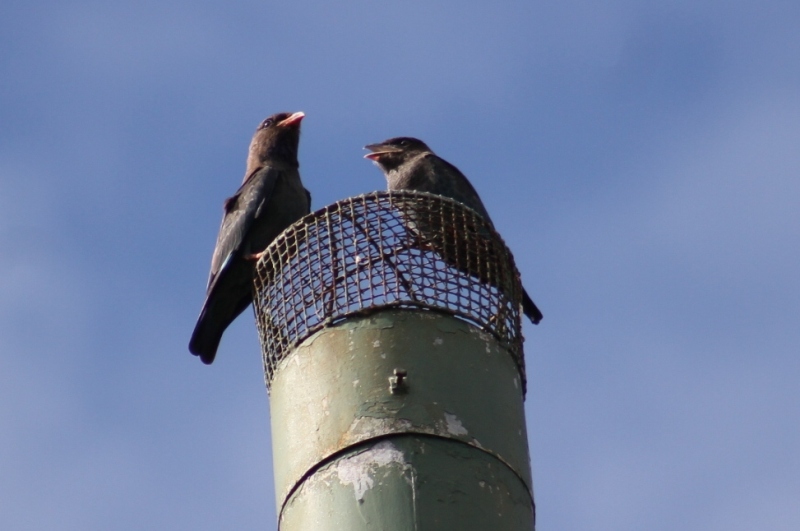
Dollarbirds in North Avalon
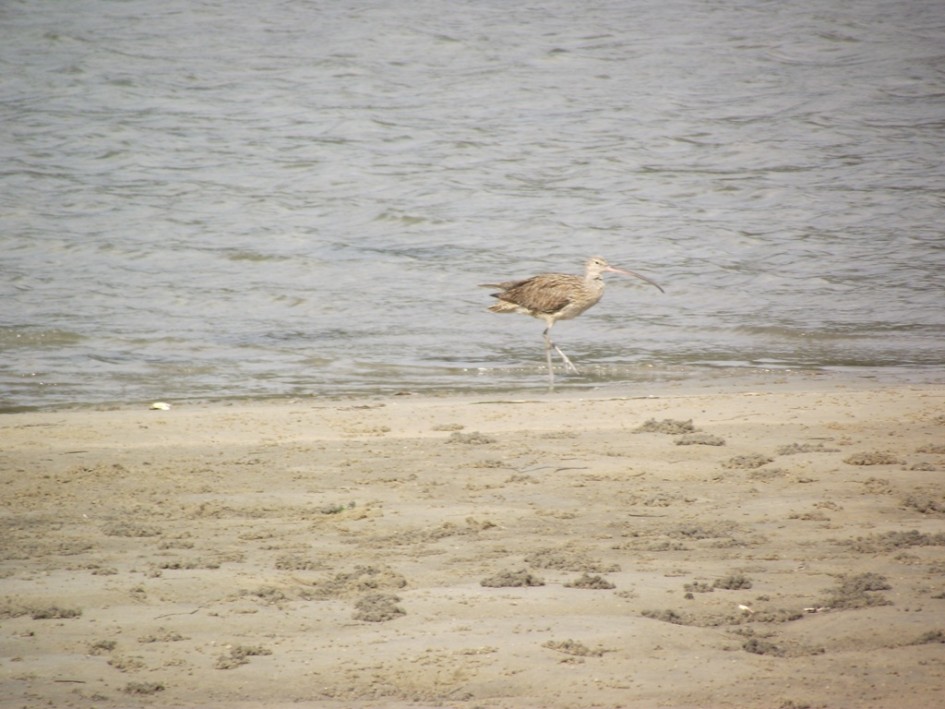
Eastern Curlew at Careel Bay foreshore - The Eastern Curlew is listed as critically endangered under the Environmental Protection and Biodiversity Conservation Act 1999. This species breeds in northern China and Russia during March – August and returns to Australia to feed during summer.
To help you start preparing for the Aussie Bird Count, BirdLife Australia's very own National Public Affairs Manager Sean Dooley talks us through how to tell the difference between commonly confused backyard birds in a series of educational 'What Bird is That?' videos.
Residents may recall the book 'What Bird is That?', originally published in 1931, was written by former Avalon Beach resident and one of Australia’s foremost Ornithologists and artists and a man who helped begin Surf Lifesaving in Australia, Neville William Cayley. Son of Neville Henry Peniston Cayley, another of Australia's early bird artists.
That little studio you can see perched atop the cliff face at Marine Parade Avalon is where Neville W created a lot of his later work, and the home on the same land, Ideal View', is where he passed away in 1950. There's a little more about him and his dad in his page.
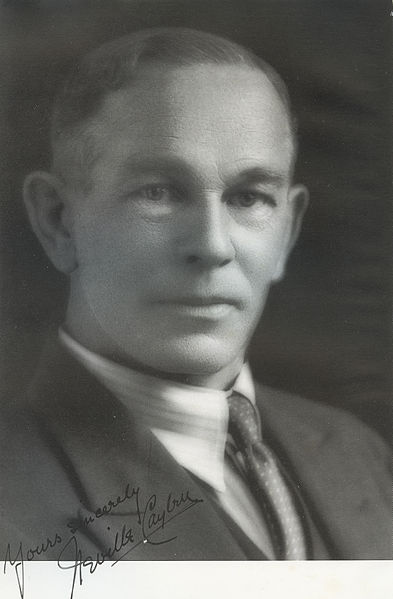
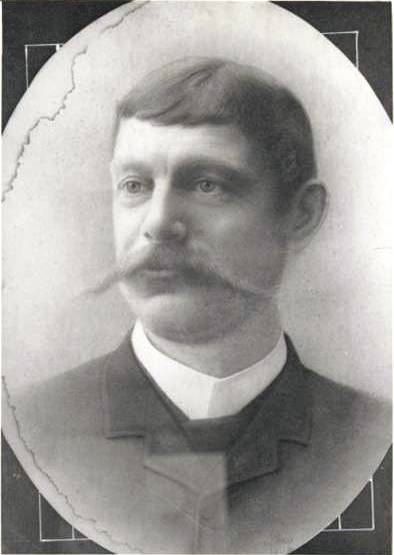
Neville William Cayley Neville Henry Peniston Cayley
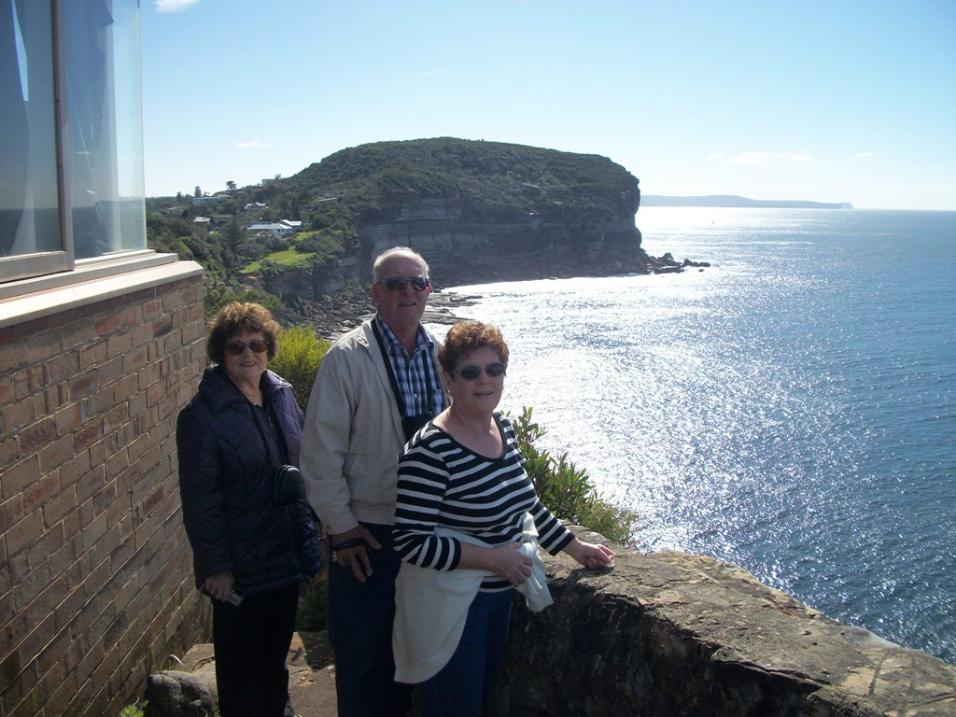
Above: at 'Ideal View', Marine Parade, Avalon, May 2012, Joan(granddaughter), Neville David (grandson) and Vera (Neville D's wife) - the news service was fortunate to host the Cayley's when they visited - we're still in touch . Photos: A J Guesdon
Neville W Cayley's studio from south Avalon Beach headland this year
A little closer -'Ideal View's studio on the ridgeline
Neville isn't our only premiere Australian Ornithologist, there's There's Harry Wolstenholme, Ornithologist of Palm Beach and Bird Man Of Wahroonga, and George Ernest 'Archer' Russell, once of 'Suncot' in Idaline Street, Collaroy Plateau, or even John Wheeler, frequent visitor to McCarrs' creek, Church Point.
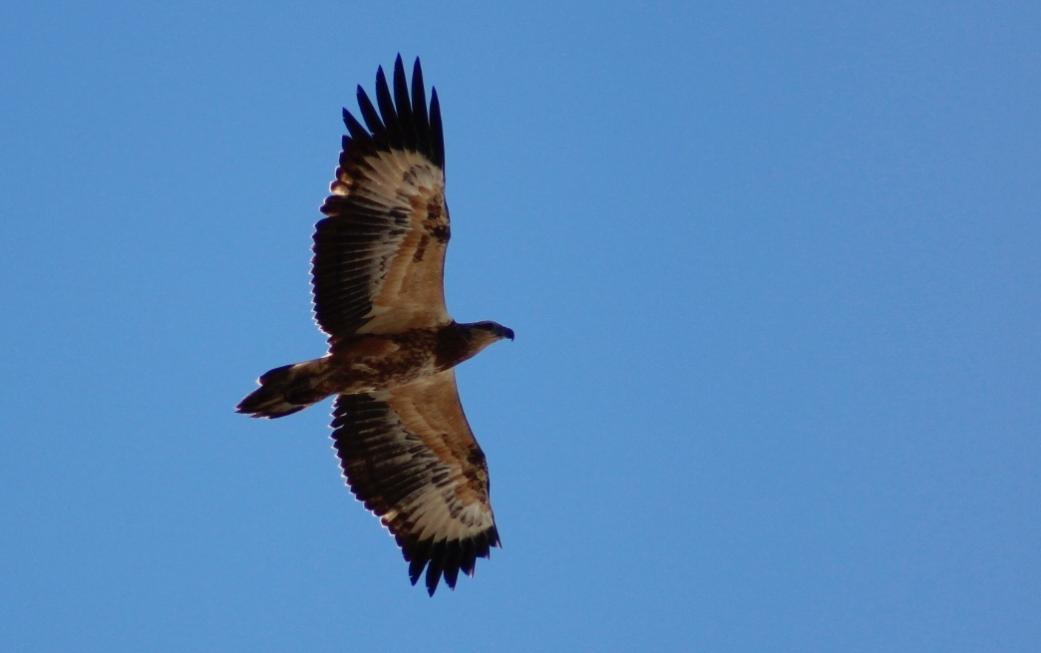
Juvenile Sea Eagle at Church Point
In fact, Australians young and old have been counting birds for 125 years. Before Europeans landed here, the original custodians of this place sang up the songlines of birds - in fact the songline for Pacific Black ducks runs through this place, while the emu and the Baime/Daramulan creator spirit, together with his emu-wife, rests atop Elvina Bay and shines above our heads. In Spring, the Emu appears to be sitting on the horizon. This is interpreted as the Emu sitting in a waterhole, which indicates the waterholes are full, in the ancient Indigenous calendar-cosmology.
Did you know this place was once home to Coastal Emus? Or that Black-necked storks came here during their breeding season, or that there were colonies of Fairy (Little) penguins living on Turimetta, Narrabeen, Collaroy and Long Reef beaches?
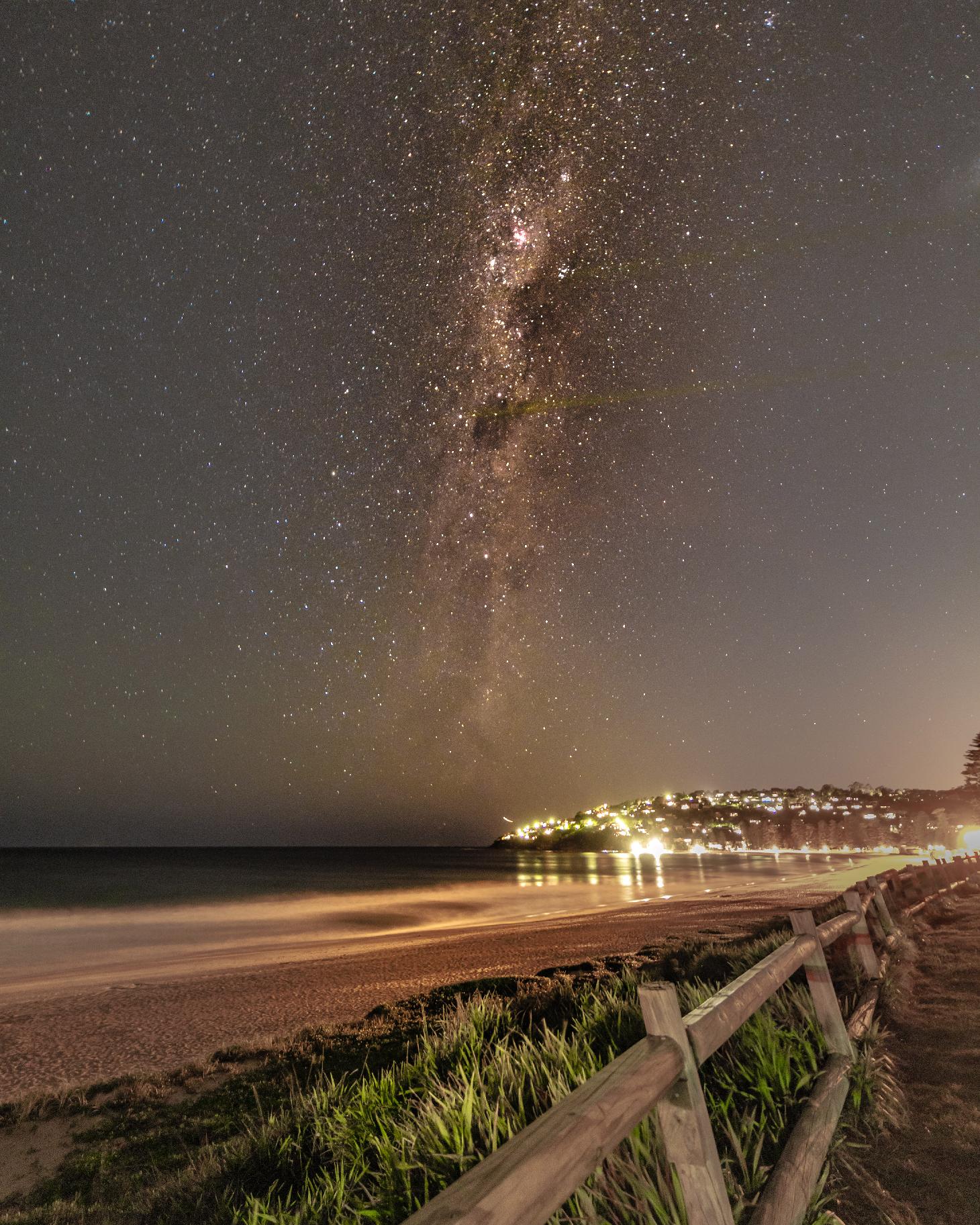
Our area is one of those places where you will find shore birds, both year-round residents and migratory species, ocean birds like penguins or albatrosses, birds that live in trees, birds that live on the ground (there's a tribe of bush turkeys in our yard - a lyre bird that sings from the bush behind us), birds that live in wetlands, birds that live on the sides of cliffs or among the creeks, lagoons and even build nests in the sides of bush banks - the pardalote for instance, one of the tiny birds of Ingleside.
We are bird-blessed!
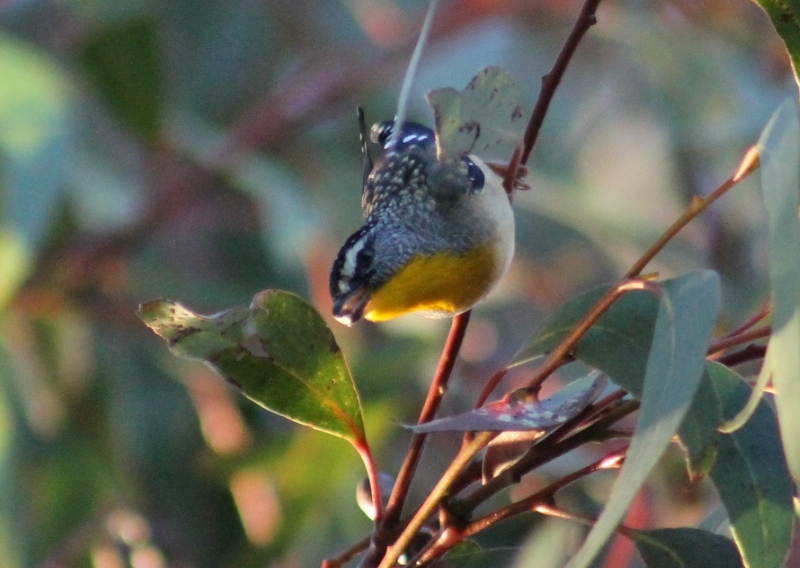
A male Spotted Pardalote. Despite being a bird of the treetops, they nest by digging a tunnel in the side of a bank
BirdLife Australia's Aussie Bird Count webpage and website has been fully loaded with resources to help our community spread their wings and hop, skip, and fly.
There are tabs for:
- Schools - Get students involved in counting birds. Access free lesson plans and educational resources.
- Councils - Want to get your community involved in Australia’s biggest citizen science event?
- Businesses - Encourage your employees to take part in team building, all while enjoying nature.
- Communities - Part of a community group and looking for activities to do? Join us this October.
Time get Birdified!
It's as easy as:
- 20 minutes - Just spend 20 minutes in your favourite outdoor space and tell us about the birds you see during that period.
- Count the birds - You can submit your results using the app or the web form.
- Bird finder - There’s a built-in “bird finder” tool to help you identify birds you’re unsure of.
- Submit your count - You can count as many times as you want. Every count helps.
Go in the draw to win prizes for counting birds
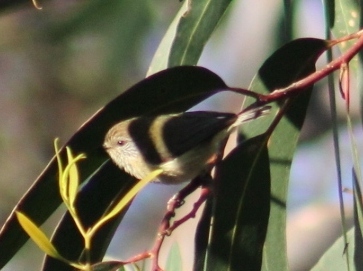 Register for the Aussie Bird Count and submit a count between 20-26 October to go in the draw to win a prize from one of BirdLife Australia's incredibly generous sponsors.
Register for the Aussie Bird Count and submit a count between 20-26 October to go in the draw to win a prize from one of BirdLife Australia's incredibly generous sponsors.
From bird books, eco-friendly gear, to fine art and more, there’s a prize for every kind of bird lover. Have a look here: aussiebirdcount.org.au - Register and download the app today.
Now in its twelfth year, the Aussie Bird Count is Australia’s largest annual citizen science event, with around 100,000 people participating each year.
You can contribute to the Aussie Bird Count from anywhere in Australia
This is a nationwide event – count in your backyard, front yard, courtyard, local park, school yard or other favourite outdoor space. Your location might be along the coast, in the middle of the desert, in a national park or on a farm. You can count birds anywhere – as long as you are in Australia.
What's more, you’ll be part of a movement for Australia’s birds.
Below runs a video on How to use the Aussie Bird Count App - below that a few 'locals', because we ever miss an opportunity to share all the many ways and places you may have the blessings of birds.

Narrabeen Lagoon Black Swans - photo by Michael Mannington OAM, Community Photography, in 2013.

The Australasian gannet (Morus serrator or Sula bassana), also known as Australian gannet and Tākapu - photo taken off Barrenjoey Headland in 2015 - A J Guesdon. Visit: Sea Birds Off The Pittwater Coast: Albatross, Gannet, Skau
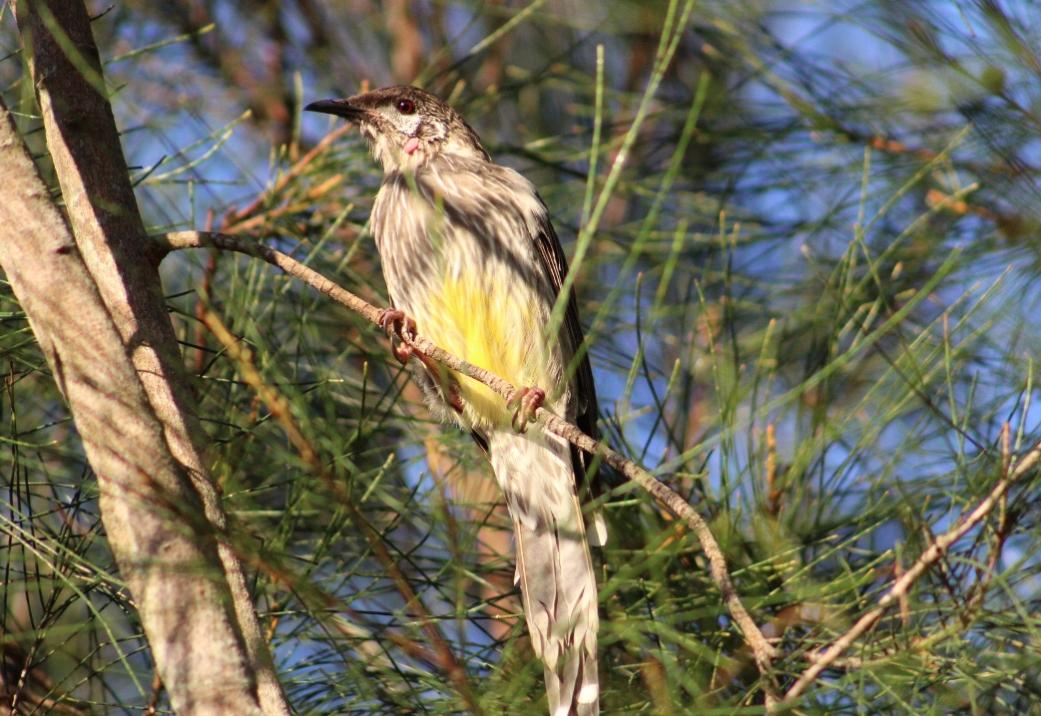
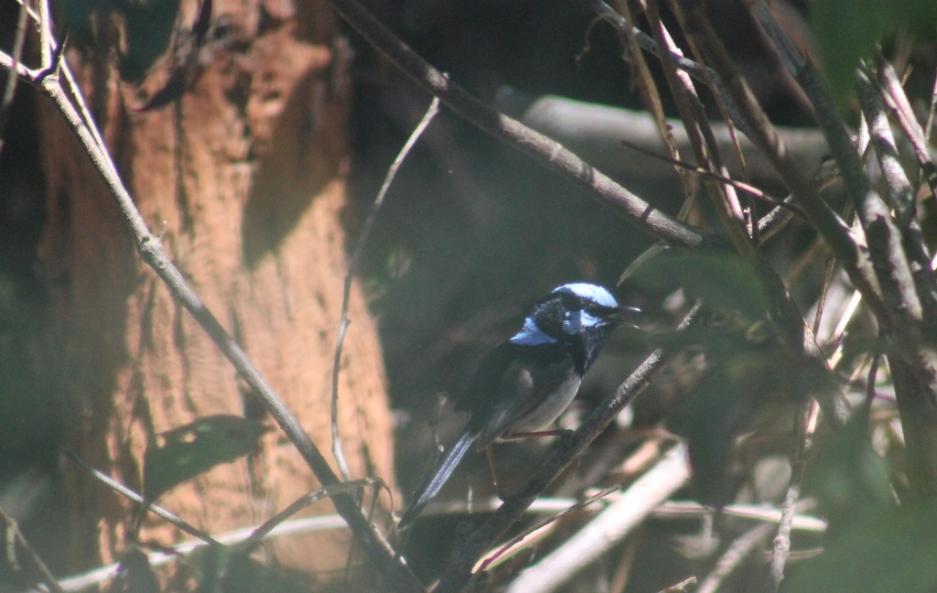
Male Superb Fairy Wren.
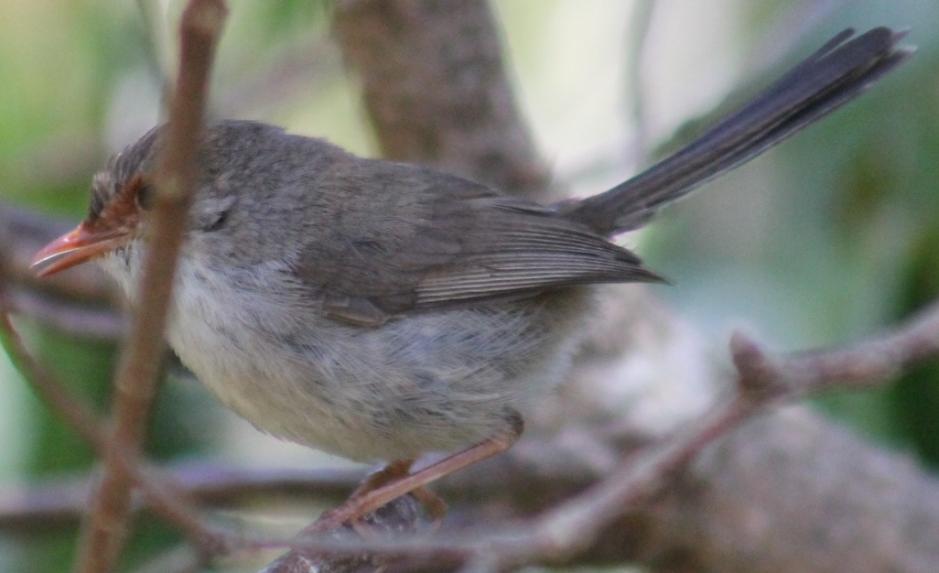
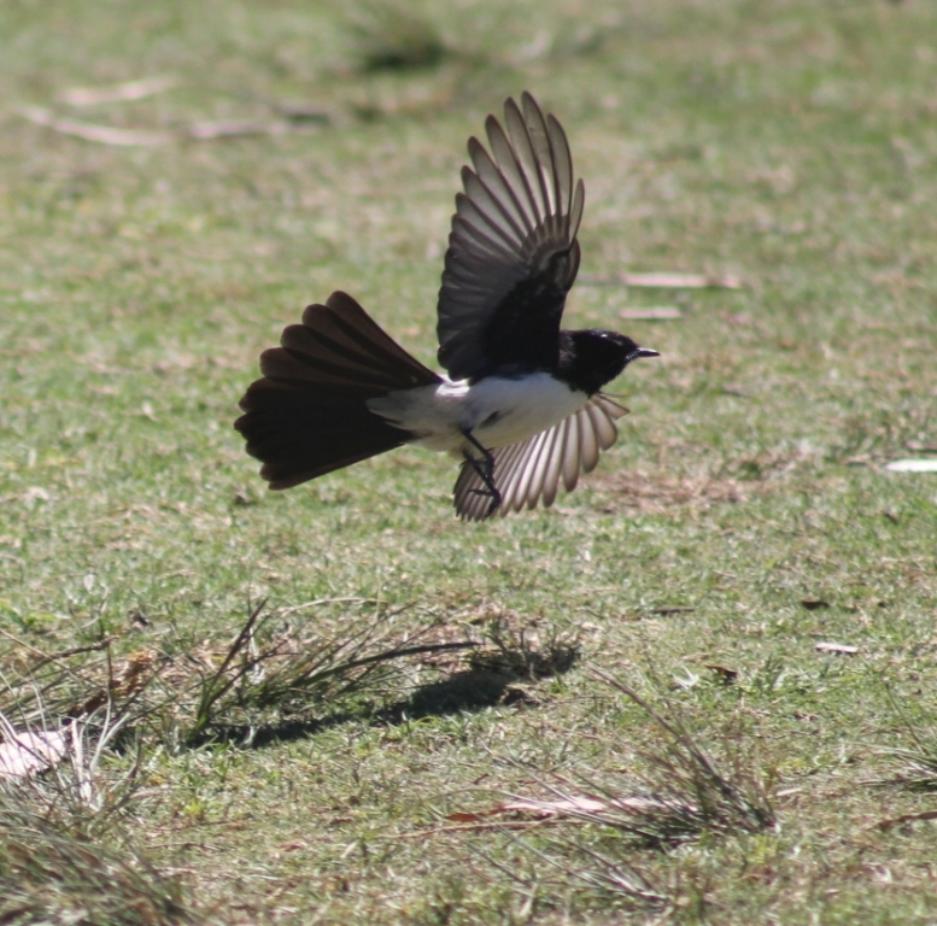
Willy Wagtail (Rhipidura leucophrys) - also loves insects
.jpg?timestamp=1679635455680)
I See you!
Channel Billed Cuckoo being fed by a Currawong
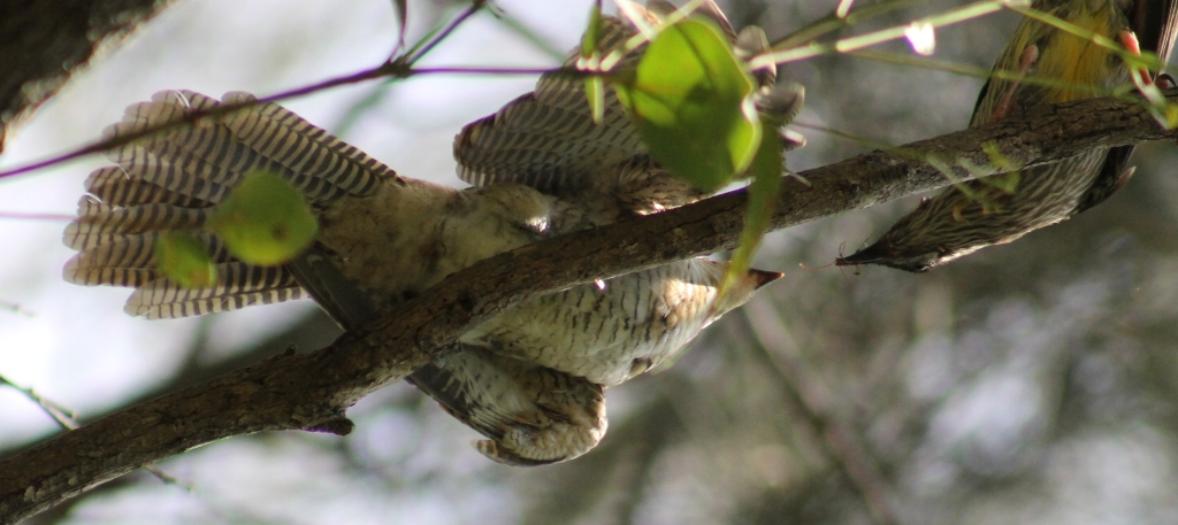
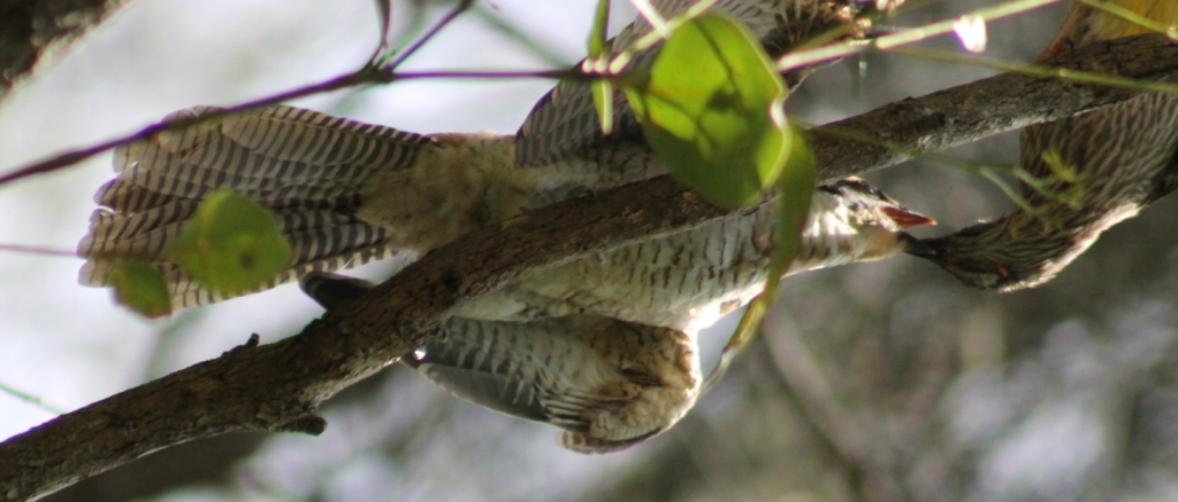
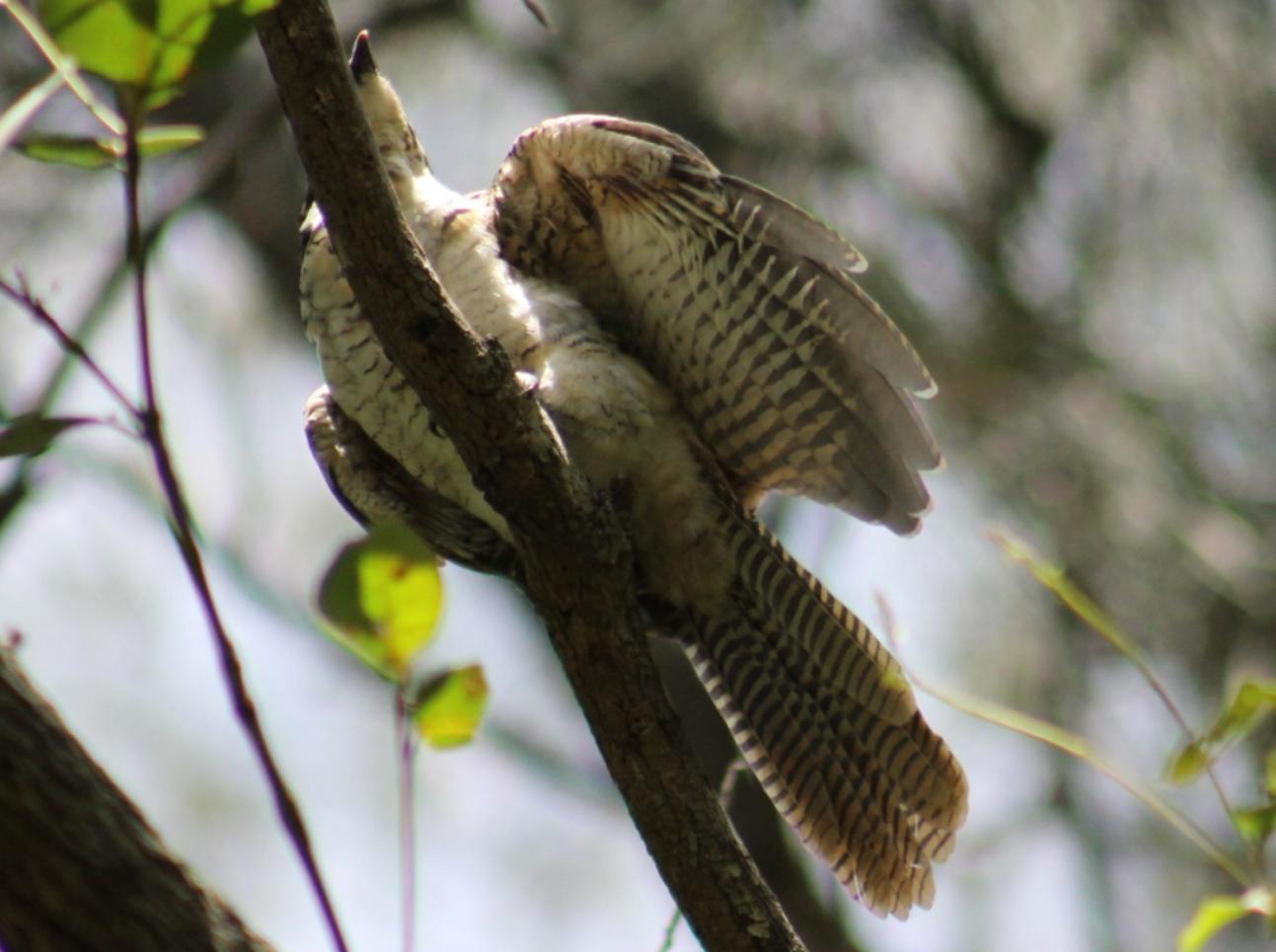
The Brown Thornbill (Acanthiza pusilla) is a passerine bird usually found in eastern and south-eastern Australia, including Tasmania. It can grow up to 10 cm long, and feeds on insects but may sometimes eat seeds, nectar or fruit. They feed, mainly in pairs, at all levels from the ground up, but mostly in understorey shrubs and low trees. Will feed in mixed flocks with other thornbills out of breeding season. The one pictured below was photographed beside the Careel Creek, which has been restored through local bushcare volunteers.
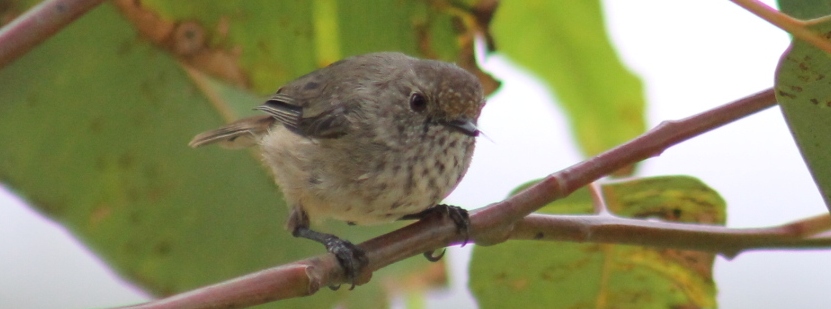
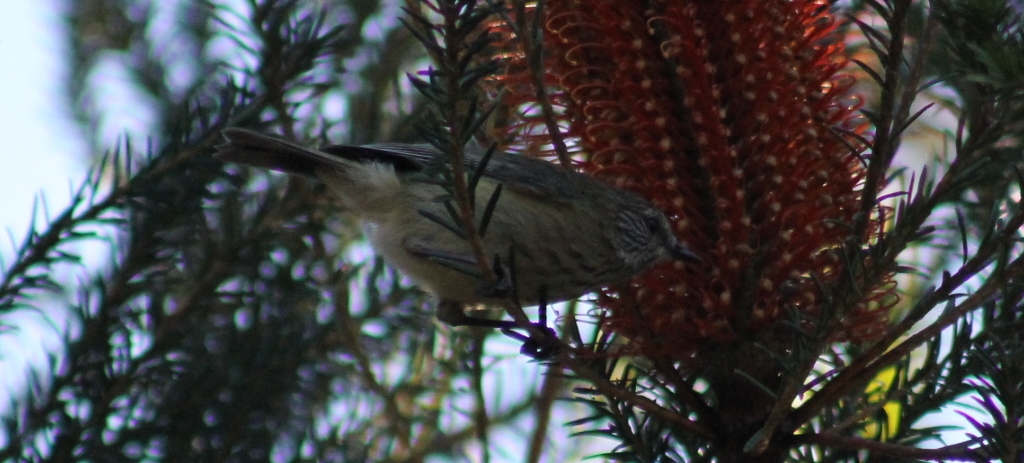
The Striated Thornbill is a medium-sized thornbill with greenish upperparts, an orange-brown cap, streaked distinctively with white and off-white to cream underparts, heavily streaked on chin, throat and breast. The sexes are similar and young birds are only slightly different to adults, with less streaking on the underside.
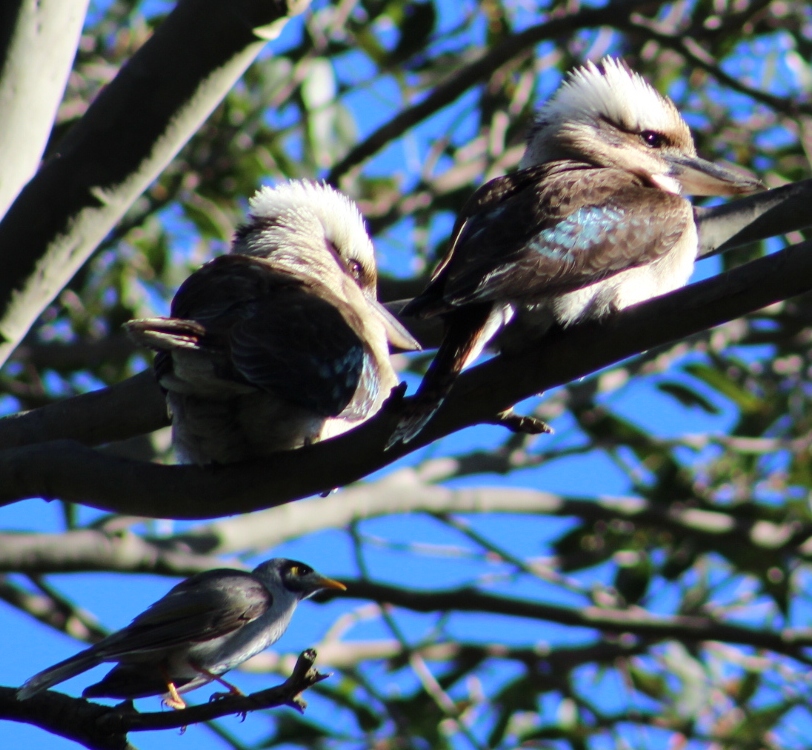
Each Spring this pair of Australasian Figbirds(Sphecotheres vieilloti) returns to build a nest and make babies in the Norfolk pine alongside us. There is food in our garden for them and no cats, at least none that can get that high up.
.jpg?timestamp=1648584010745)
Long-billed Corella
.jpg?timestamp=1680312728000)
parent bird with two Little Corella fledglings, grooming one of them
being fed

Above: Galahs - Below: Crimson Rosella
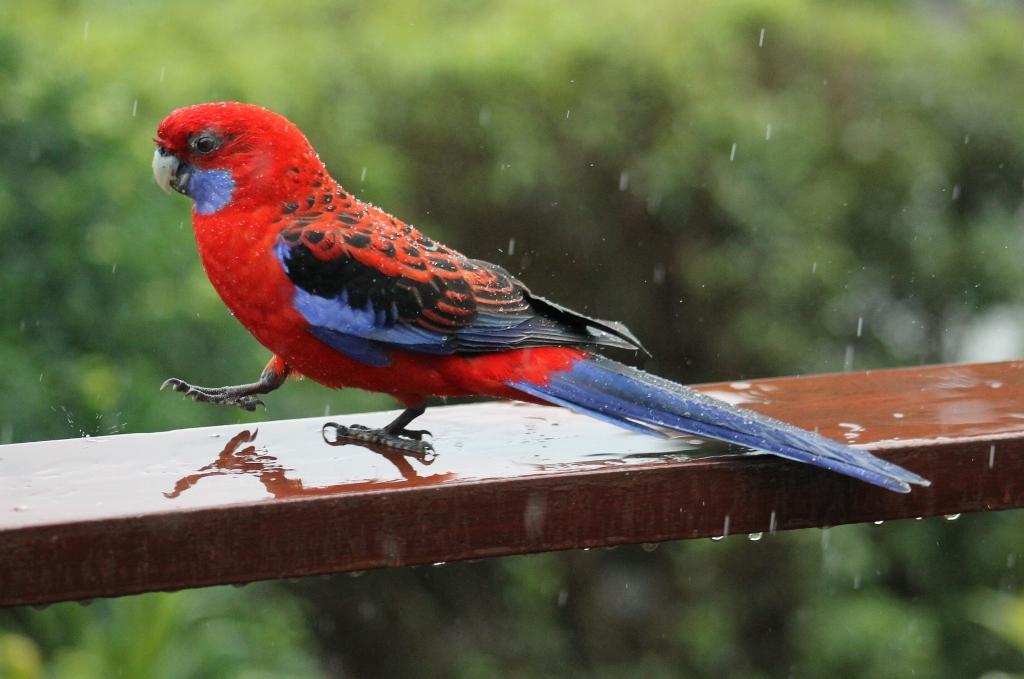
Scaly-breasted Lorikeet
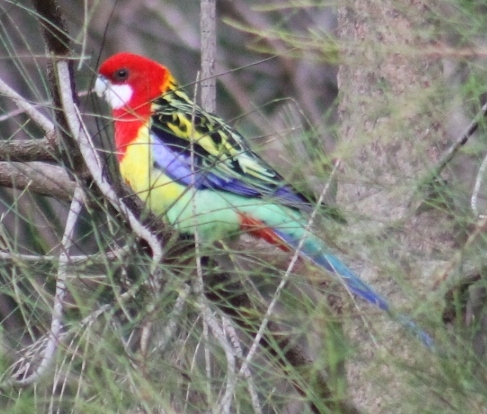
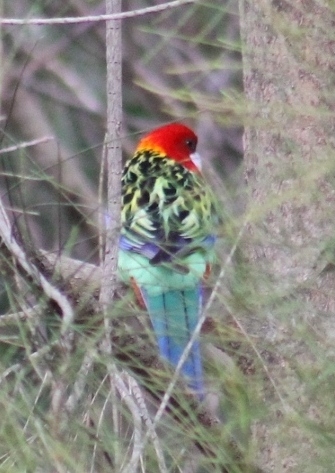
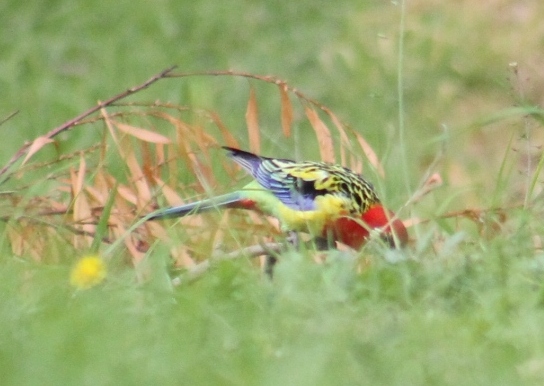
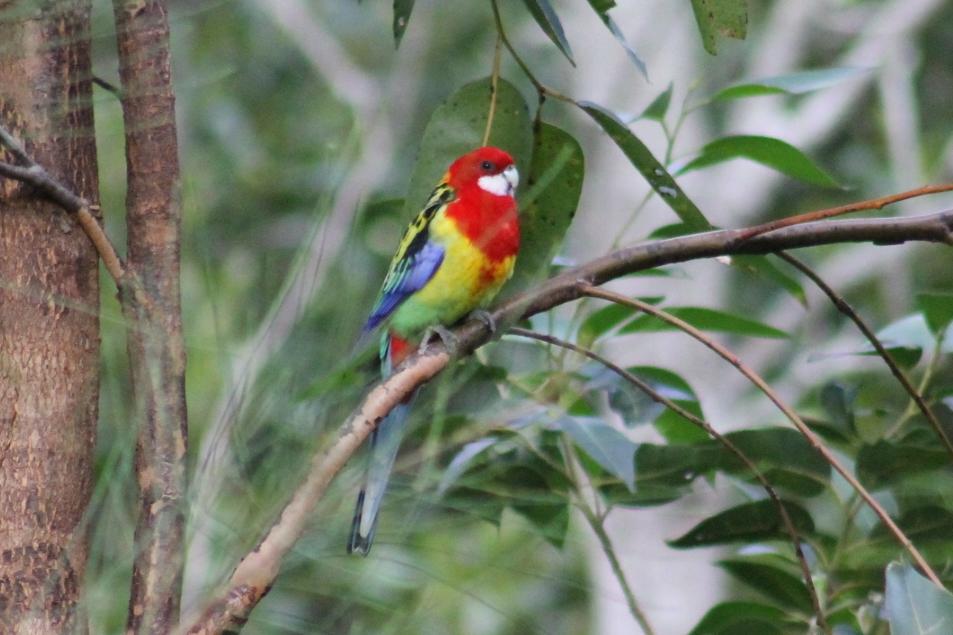
Eastern Rosella
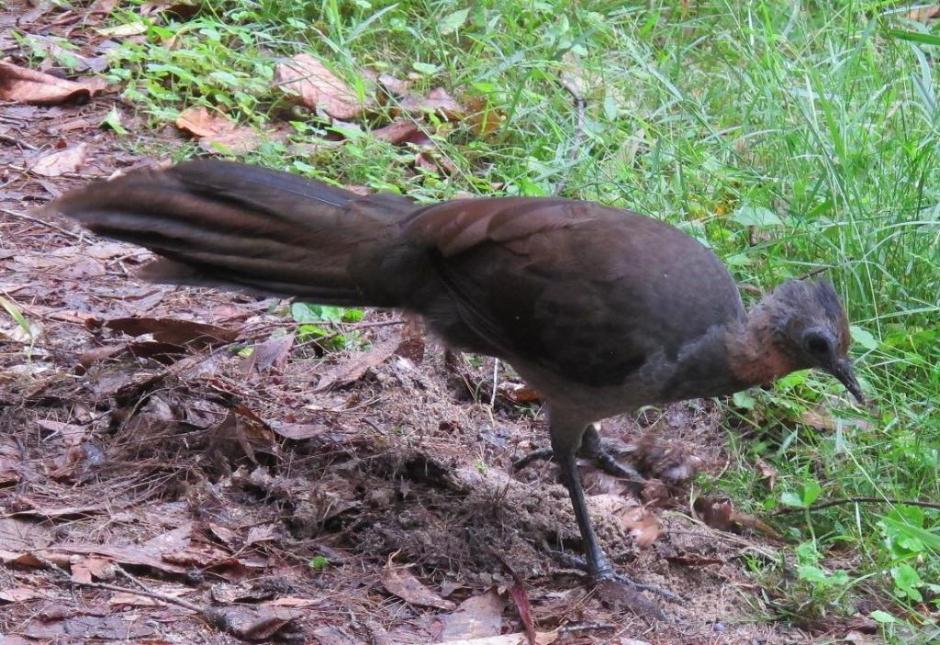
Pittwater Lyrebird - photo by Marita Macrae.

Grey Butcherbird
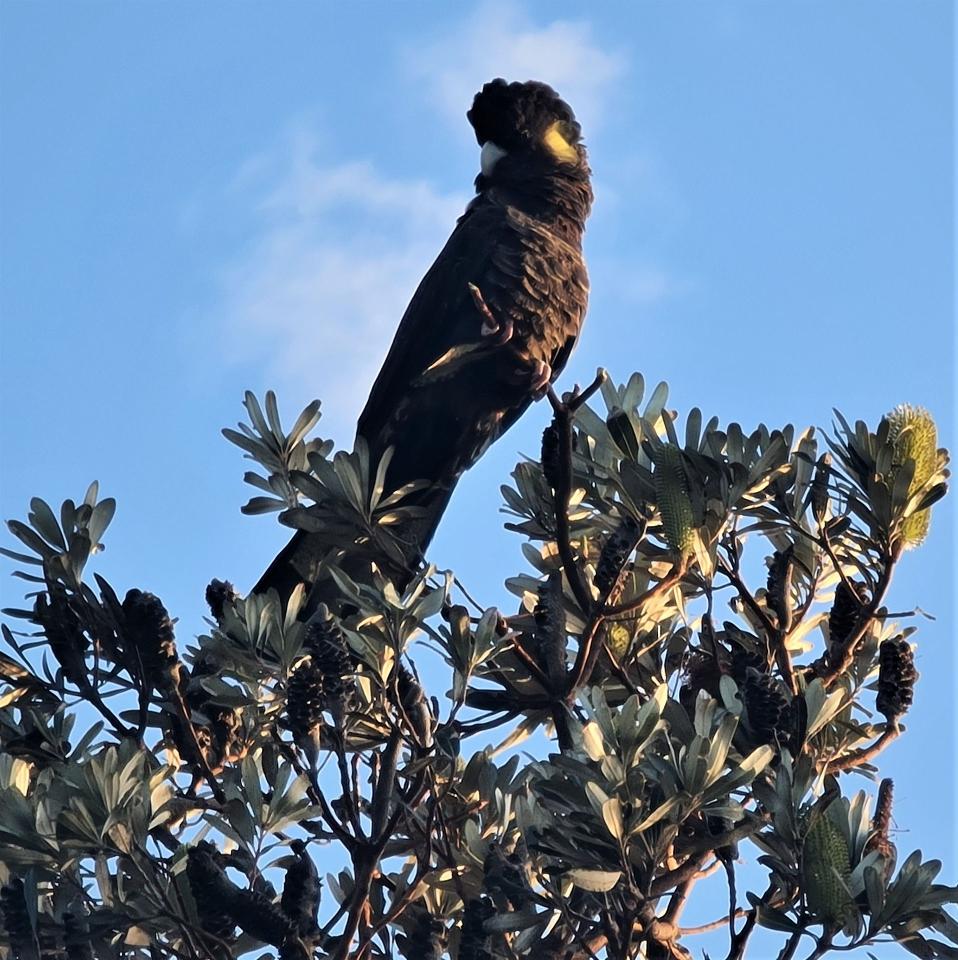
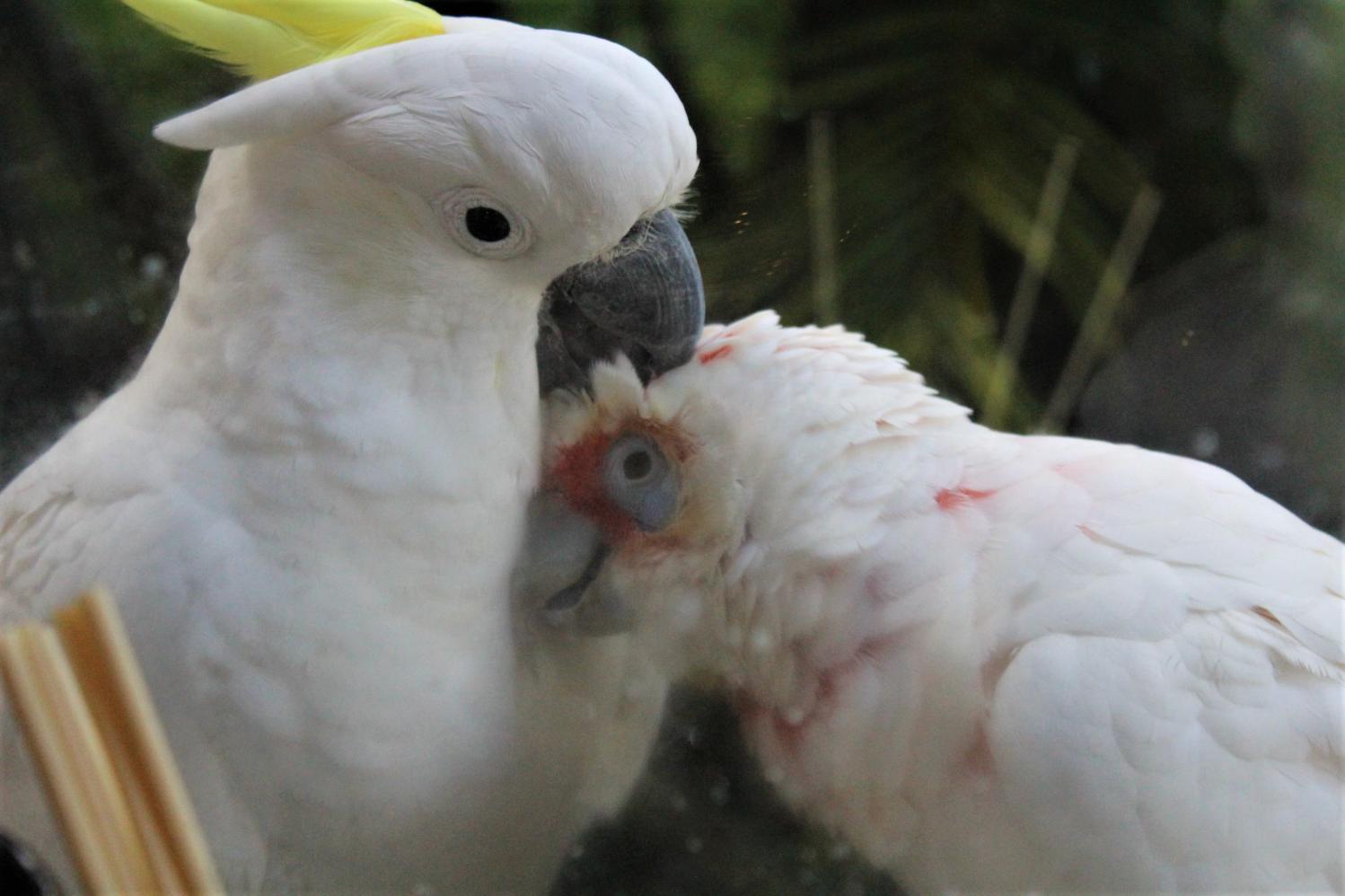
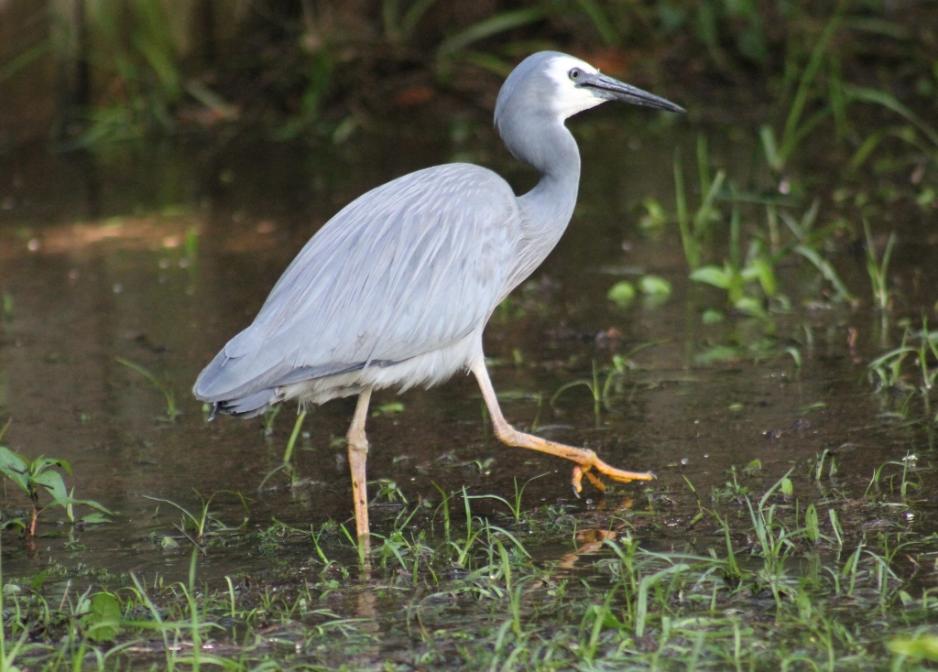
White-faced Heron out of Careel Creek and playing in a large puddle beside it
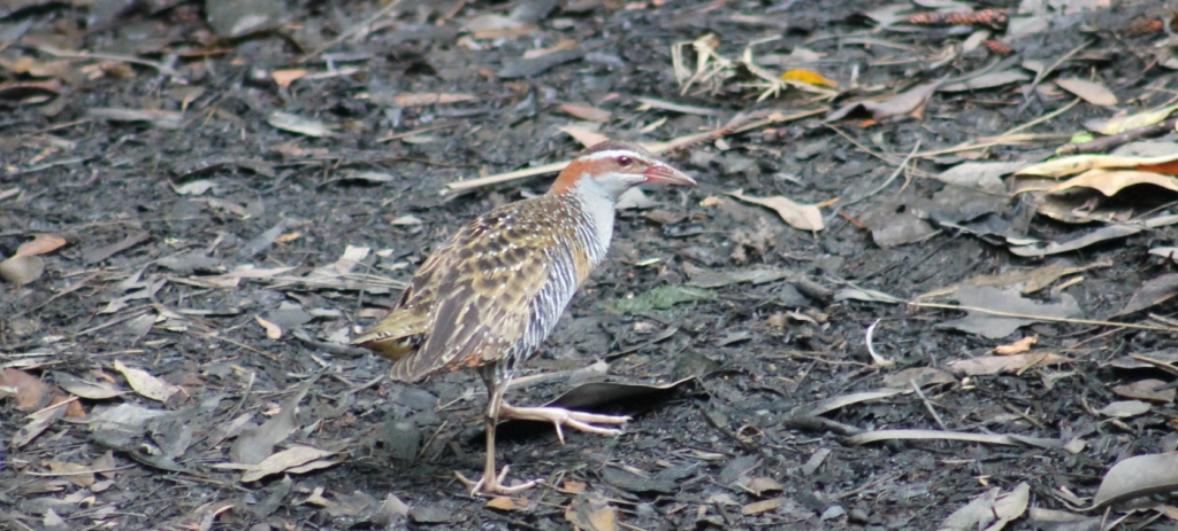
Buff banded Rail in Careel creek- The mum. (chicks were tiny black fluffballs)
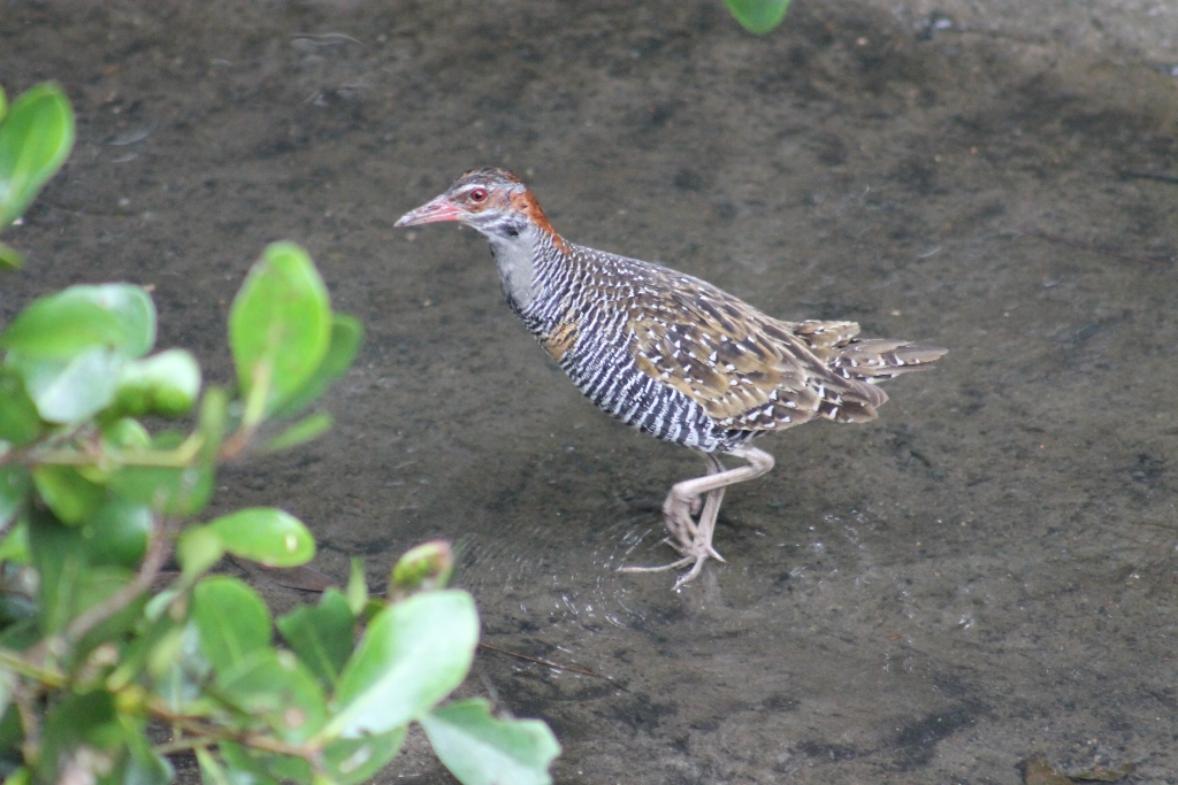
The dad.
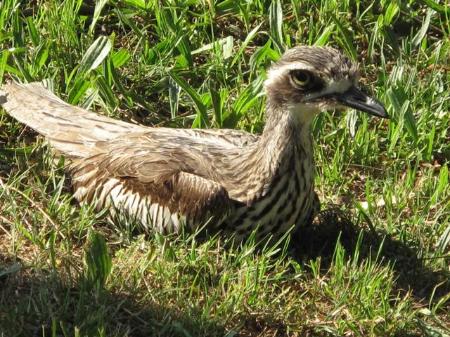
Above: Stone Curlew at North Avalon/Careel Bay, October 2011.

A Painted Button-quail rescued in Elanora Heights - photo by Lynleigh Greig
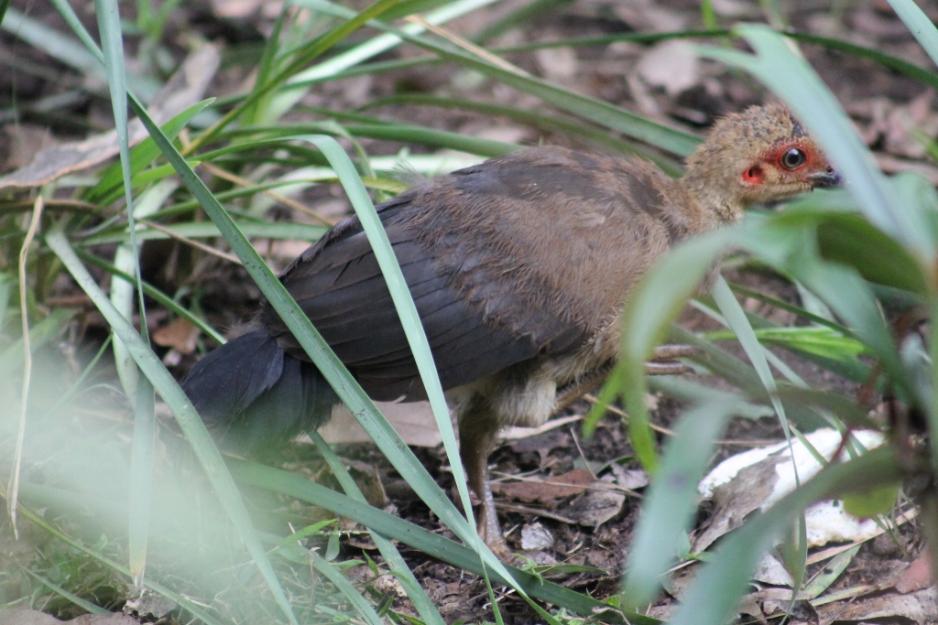
A young Brush-turkey that was scratching around in a backyard at Careel Bay - this 'troop' seem to come through this garden generation after generation and have done so for decades
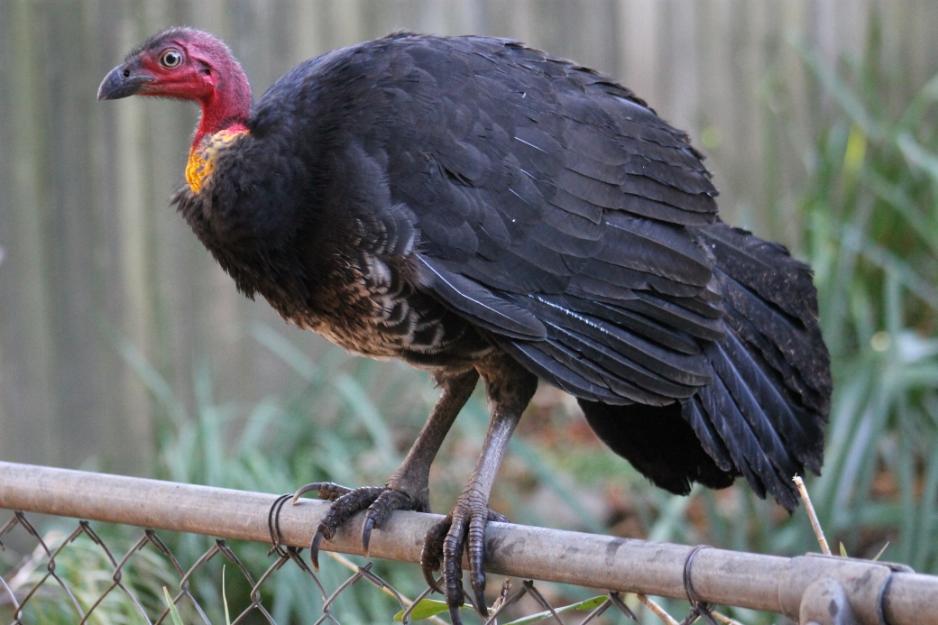
One of the parents pausing long enough to say 'good morning!'

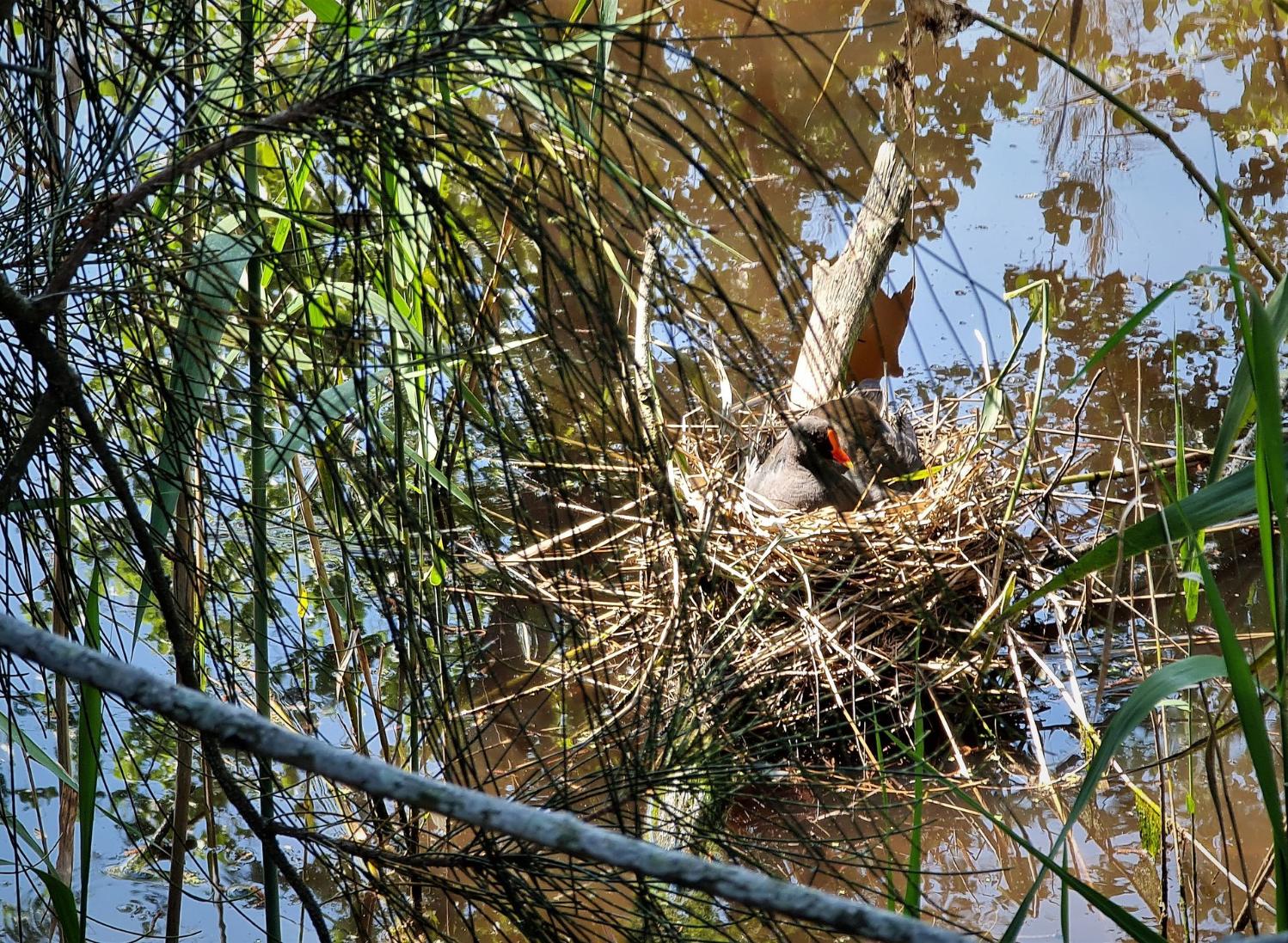
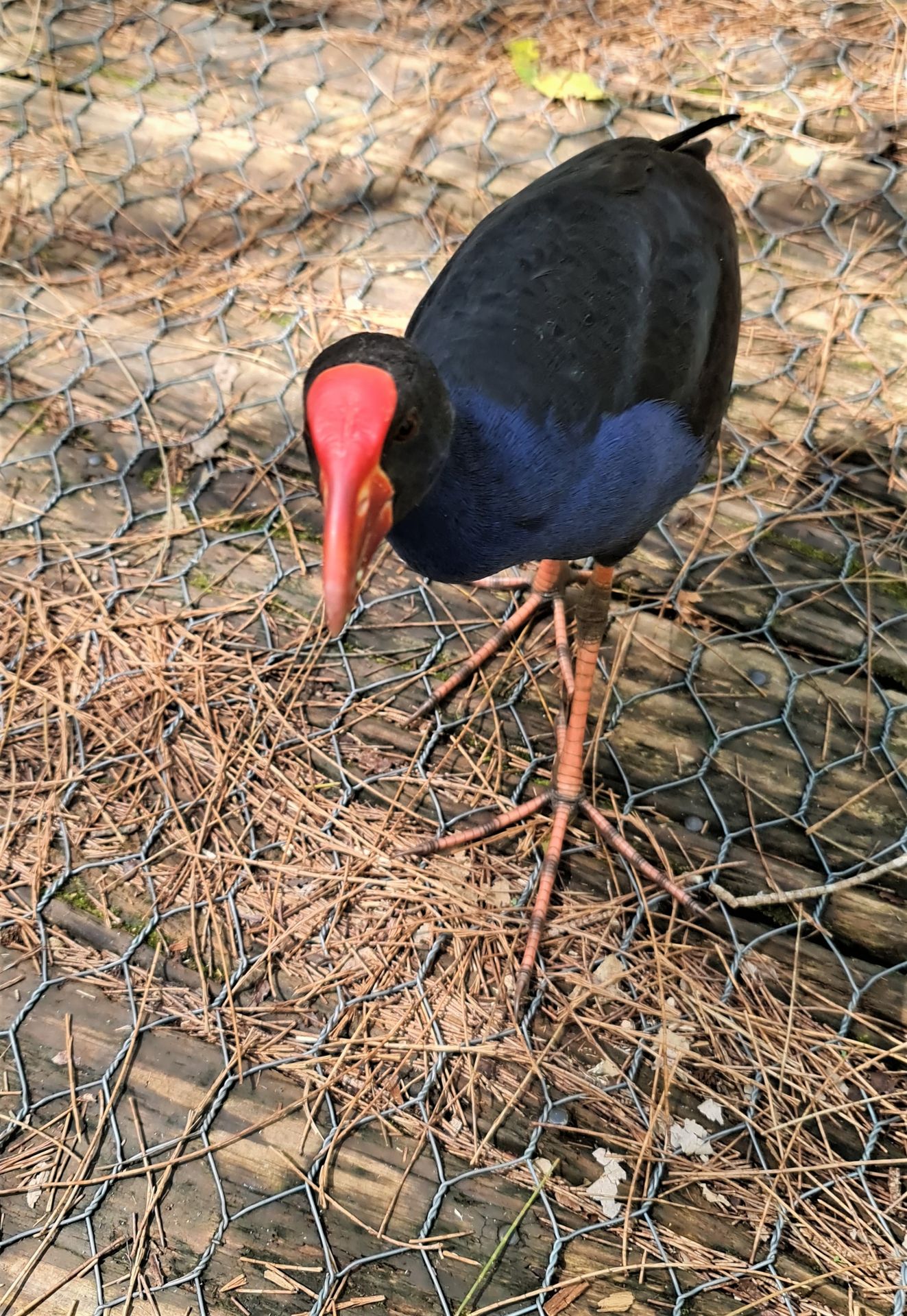
King Parrot vsiitor during the Season of Birds, Bees and Blooms.
At Narrabeen Rock platform, and intertidal rock shelf that juts out into the sea and part of our Marine Reserves, Sooty Oystercatchers return every Summer for decades now.

Narrabeen's other fishers - photos by Joe Mills
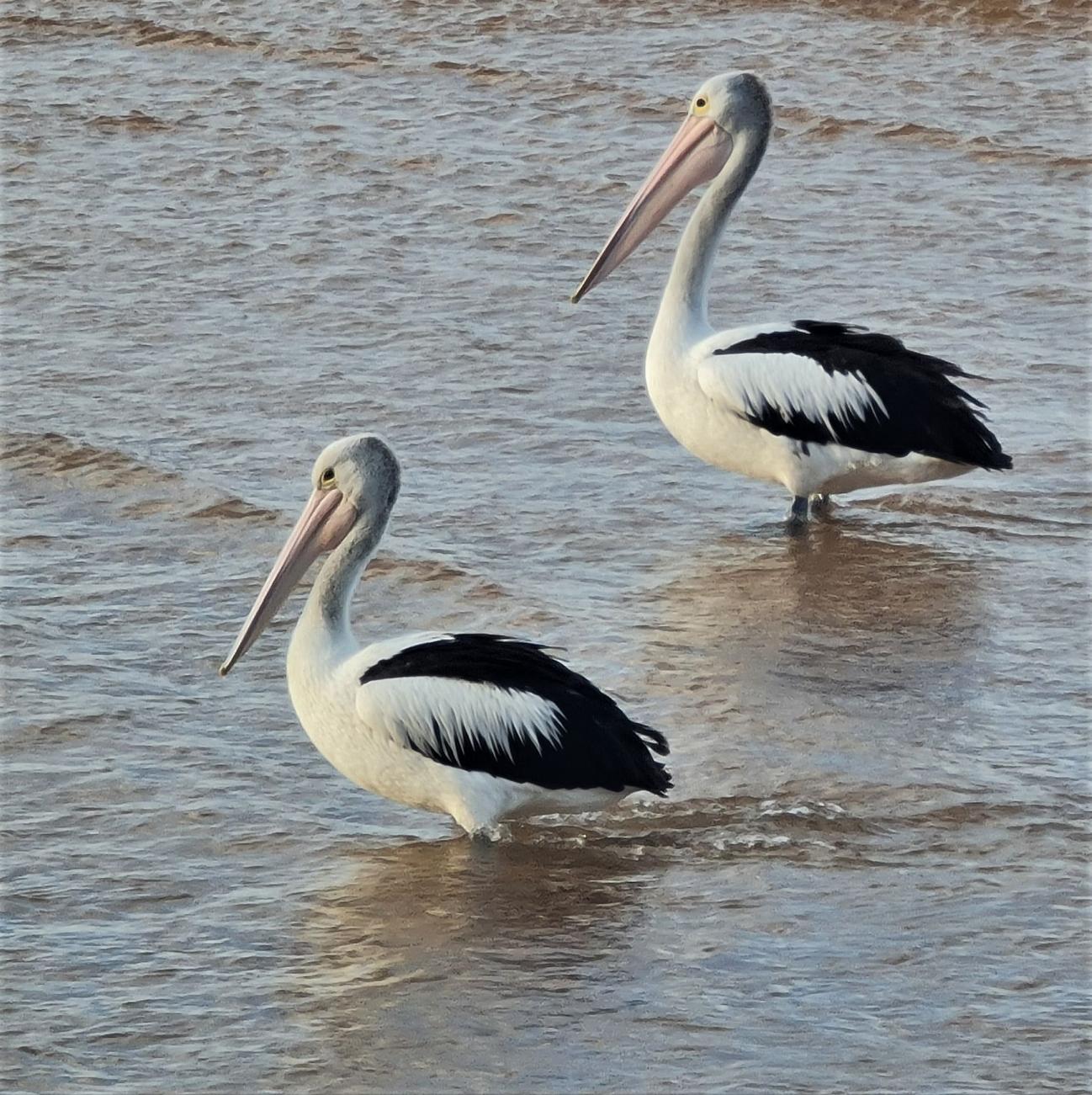


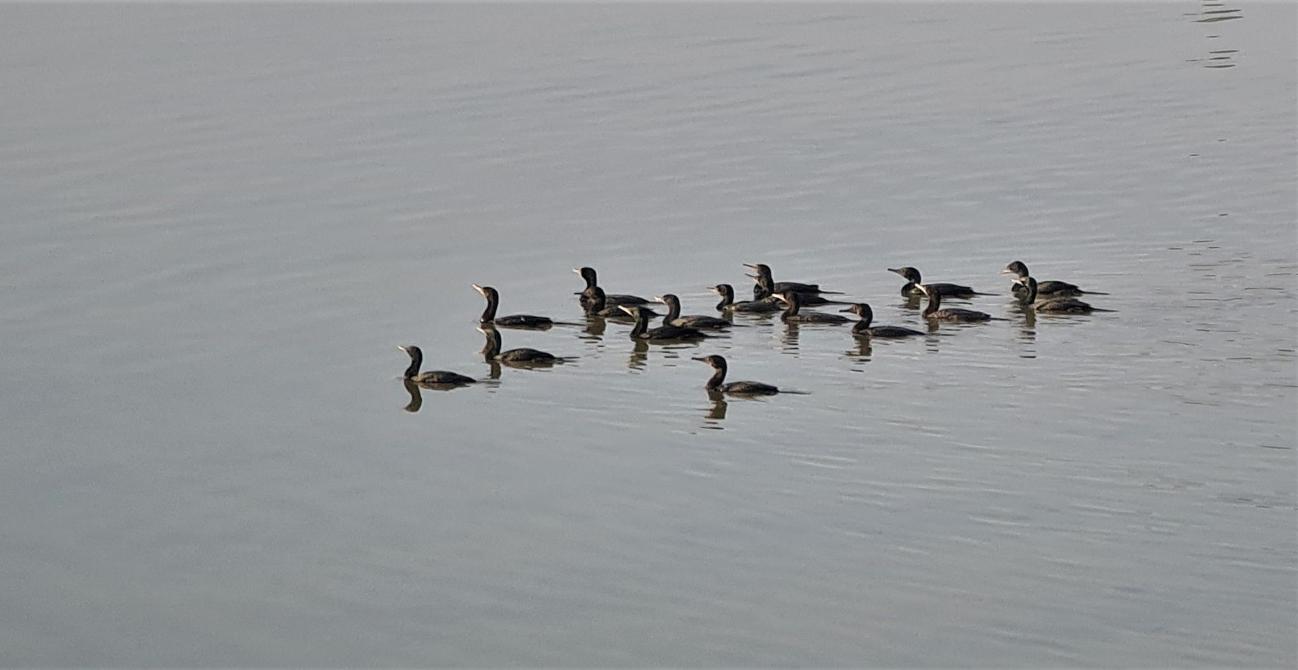
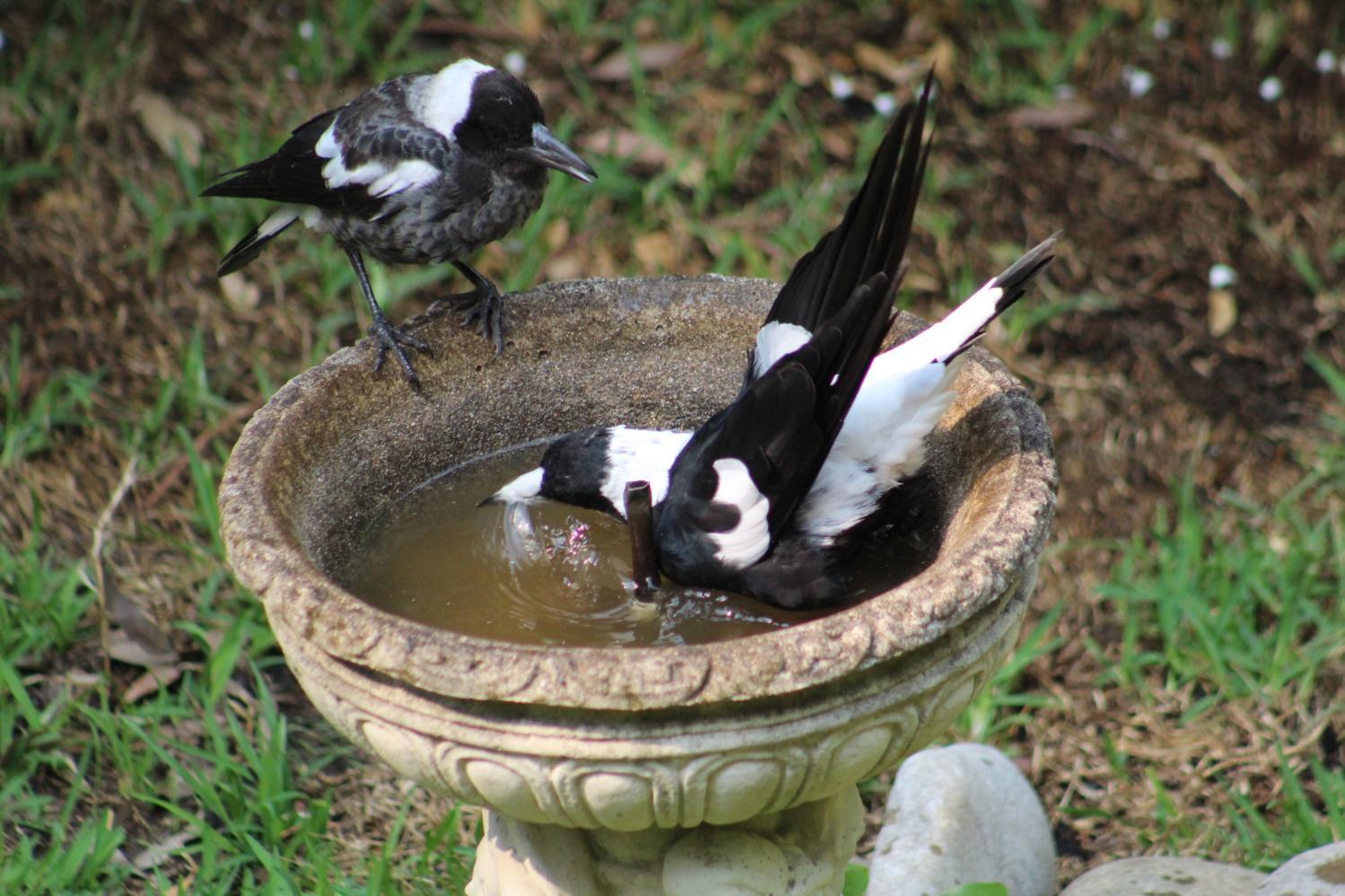
And that is just a few!